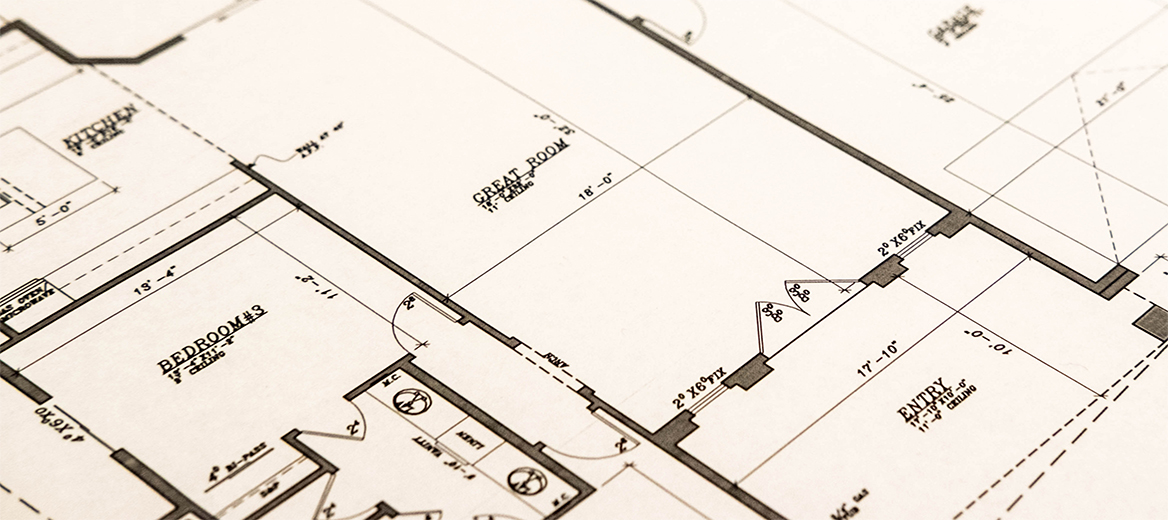The Senate fell slightly short of passage and the turnover in House leadership, coupled with other imperatives including inflation reduction and the war in Ukraine, now make this effort seem like a distant memory. But the need remains. Somewhat remarkably, some important local preservation transactions moved forward despite enormous operating obstacles and demands posed by the pandemic, paused planning while Build Back Better was pending, tightened access to low-income housing tax credits (Tax Credits) resulting from tax-exempt bond cap restraints; and rapid building cost escalation along with supply chain disruptions.
Current program tools
After years of deficient appropriations for public housing, Congress increased the public housing Capital Fund by 77 percent over the past six years. This is very important, although inflation in construction costs has reduced the net gain by approximately two thirds depending on the construction index used. Congress also quadrupled the funding in recent years for the Choice Neighborhoods program to turn around neighborhoods that include or recently included distressed public or assisted housing developments.
Whether the increased appropriations reflects a lasting shift in priorities remains to be seen, particularly with the House’s push for deep cuts in domestic spending. The recently negotiated caps for 2024 and 2025 on domestic discretionary spending, while far less damaging than the initial House-passed proposal, could have a severe impact on HUD programs going forward given market rent increases in the voucher program and other incremental funding needs. In preliminary appropriations actions for 2024, the appropriators took extraordinary measures to achieve public housing and voucher funding at or somewhat above last year’s levels. The previous appropriations increases show greater appreciation in some quarters for the importance of preserving the public housing resource, recognition that climate change puts a new urgency on investments that contribute to fossil fuel conservation and resiliency of the stock and awareness that basic resident health and safety issues including lead paint, mold, radon and security remain inadequately addressed.
PHAs can magnify recent years’ appropriations gains by using the Rental Assistance Demonstration (RAD) to convert from public housing to more financially stable long-term Section 8 project-based assistance contracts (project-based vouchers (PBV) or project-based rental assistance (PBRA)) and borrowing against the increased funding. The basic statutory constraint of RAD is that the initial conversion is not to result in higher annual costs than public housing, and thus RAD rents derived from public housing subsidies and tenant payments increase with additional public housing appropriations. This extra rental income could enable substantial increased borrowing for preservation or replacement. It would be reasonable to use as much as 13 times the annual increase in RAD rents as a very rough appropriation for increased borrowing that could be leveraged. Using that approximation in a very simplified way, the estimated $60 monthly national increase from 2020 to 2022 RAD rents reported by HUD, prior to a downward adjustment necessitated by increased operating costs, would translate into additional leveraged capital of $9,360 per unit.
The RAD program already has accelerated public housing stock investments. Through June 10, 2023, RAD had facilitated $16.7 billion in capital investment to improve or replace well over 169,000 public housing units with long-term Section 8 units under public or nonprofit control. The sources mostly are Tax Credit equity and loans. Many RAD and other public housing repositioning transactions are being assisted by significant investments of American Rescue Plan Act (ARPA) funds through state or local governments, as well as other federal, state and local sources. PHAs have made a significant number of comprehensive rehabilitation or replacement initiatives work, in part through use of the RAD Construction Blend mechanism described below. HUD’s Director of the Office of Recapitalization, Tom Davis, has reported average construction costs of over $140,000 per unit for units closed in 2022, over 14,000 units produced in teardown and rebuild efforts and almost 10,000 units produced on replacement sites likely to have lower concentrations of poverty than the original public housing sites.
PHAs’ use of Section 8 rather than the public housing program for leveraging investments recognizes that notwithstanding the recent appropriations gains, annual public housing appropriations funding is inherently unstable and on balance over the years, public housing appropriations have suffered relative to Section 8. PHAs have reduced their reliance on two program initiatives previously used to raise substantial capital but reliant on future public housing appropriations: the Capital Fund Financing Program (CFFP) and public housing mixed finance. CFFP transactions have raised new funds of under $40 million in the past four years. The annual volume of public housing mixed-finance transactions was in the $400-500 million range in 2020-2022, slightly down from annual transactions closed in 2015-2019 and far below almost $1.9 billion in annual transactions closed in 2008-2012.
Public housing repositioning
While progress under RAD has been impressive, it addresses a fraction of the backlog of public housing capital needs estimated by national public housing groups to be at least $70 billion. Moreover, even with the additional leveraging that RAD can produce, the RAD rents often have not been high enough to produce the necessary cash flow to finance the needed rehabilitation or replacement.
Recognizing that, HUD has found ways to make available Section 8 funding at levels much closer to usual market-driven Section 8 limits. HUD has labeled both RAD and this effort public housing repositioning. For the non-RAD aspect, HUD has enabled the conversion of public housing subsidies to replacement tenant-based vouchers (called tenant protection vouchers or TPVs) that PHAs then can use to support long-term PBV contracts. HUD provides up to 1 for 1 TPV replacement for public housing that passes HUD’s test as obsolete, scattered-site developments and the last units in a PHA’s public housing inventory. HUD also has made available combinations of RAD subsidies and TPVs, labeled RAD Construction Blends, to address in part developments with substantial rehabilitation needs. In early 2021, HUD published a notice greatly strengthening the terms of the RAD Construction Blends so that the percentage of TPVs available can be up to 80% in high-cost areas and 60% in other areas, and otherwise facilitating repositioning with full-value PBVs.
Public housing repositioning using TPVs has assisted PHAs in high-rent markets with developments that qualify, where the increase in resources resulting from award of Section 8 based on market-level rents relative to public housing funding is substantial. PHAs in lower-rent markets have had to rely mostly on RAD, additional public housing appropriations, Tax Credits and other sources to make progress, but without an influx of resources resulting from TPVs.
NYCHA
The New York City Housing Authority (NYCHA) has responsibility for approximately 175,000 public housing or former public housing units—about 1/6 of the Nation’s inventory. In 2019, NYCHA’s new Chair and CEO approved under a NYCHA/City of New York/HUD Settlement Agreement to address substandard conditions, Greg Russ, estimated NYCHA’s basic capital needs at $40 billion—far beyond what public housing appropriations or RAD supplemented by borrowing could produce. NYCHA then proposed a long-term plan that relies on use of full-value PBVs funded by TPVs. This plan will have the financial wherewithal to succeed only with a sustained higher annual appropriation for TPVs, which also is needed to support the RAD Construction Blends. Congress increased this appropriation from $100 million in 2022 to $337 million in 2023. The Administration proposes a further increase for 2024. NYCHA recently increased its needs estimate to $78 billion, attributing about two thirds of the increase to inflation since 2017 and one third to additional scope items.
NYCHA faces challenging pandemic-related operating fallout in addition to the conditions deficiencies to address while it attempts long-term redevelopment. This includes a $500+ million shortfall in public housing rental payments that federal COVID-19-related assistance did not cover. Such rent delinquencies are very serious at some other PHAs such as San Antonio, but obviously of a different magnitude in New York City.
Build Back Better and public housing
The Build Back Better legislation would have provided $65 billion in public housing capital funds, to be allocated largely through discretionary HUD grants, to address the backlog. This historic proposal had the advantage of simplicity and up-front efficiency of allowing rehabilitation with less reliance on multiple funding sources. The proposal would have had substantial implementation challenges and left reliance on the annual appropriations process for long-term operational viability of stock that would remain public housing. Nevertheless, it provided the first legislative hope of addressing the backlog in a comprehensive manner. It deserves more than a historical footnote.
A new initiative—Faircloth to RAD
In 2021, the Administration established a new means of expanding the low-income housing stock, by drawing on an interpretation of the statutory limitation on new construction of public housing to the number of units that a PHA had as of October 1999 (called the Faircloth amendment, after its Senate author). “Faircloth to RAD” provides PHAs the ability to add units up to that 1999 level through the public housing development process and then conversion to RAD at the completion of that process. The new aspect is the conversion to RAD, which allows PHAs who were not interested in using their Faircloth unit authorizations to provide more under-funded and over-regulated public housing or could not leverage capital to do so, instead to produce additional Section 8 units. Nationally, HUD estimates the total Faircloth authorization to be nearly 220,000 units.
Faircloth to RAD has no up-front capital funding and provides ongoing funding only at public housing program levels for new developments. As a result, its early use mostly has been where PHAs can bring additional resources to the transactions, such as through Moving to Work or ARPA funding, with 9% Tax Credits or in developments with other types of units where cross-subsidization is possible. In a few situations, PHAs have been able to combine Faircloth to RAD and public housing repositioning to both preserve and add to the low-income housing stock. A July 2023 HUD notice could improve this picture, by allowing non-MTW PHAs to use section 8 reserves to supplement Faircloth subsidies in some circumstances.
Proposals to accelerate progress
The Administration and Congress should take actions that can provide a significant boost to the preservation, rehabilitation and hard-unit replacement of the public housing stock, even within the constraints of the budget caps.
What the Administration can do
- Advocate for the necessary housing assistance funding
The Administration’s 2024 proposed budget goes far beyond that level, with $175 billion in proposed housing assistance including $7.5 billion “to preserve distressed public housing through rehabilitation and redevelopment”. Much of the request including that proposal is for mandatory rather than discretionary appropriations, an appropriations status that housing subsidies never have attained despite the fundamental need for housing funding.
- Provide public housing stock preservation the kind of rent support available to privately-owned assisted housing
While RAD Construction Blends and public housing repositioning have enabled big steps forward, the availability of 100% TPVs to fund Section 8 contracts at reasonable market rents remains limited largely to developments that pass HUD’s stringent obsolescence test. A paper by public housing experts Rob Hazleton and Greg Byrne highlighted that HUD’s theoretical cost of rehabilitation obsolescence test will not allow some developments to qualify that are 60+ years old and have had some modernization, but are functionally obsolete with unsafe features such as poor egress for fire safety, poor design and inadequate systems such as under-sized electrical systems and no air conditioning in hot climates.
These HUD requirements disfavor public housing preservation substantially relative to largely privately-owned non-RAD Section 8 project-based rental assistance. Owners with non-RAD Section 8 PBRA projects that serve large families or elderly or disabled families with at least half their units or are located in low-vacancy areas broadly have the right to increase contract rents to market levels (called “Mark Up to Market” (MUTM)) to accomplish preservation if they will extend their Section 8 contracts. After decades of national disinvestment in public housing that largely has caused the huge capital backlog, there is no reason to disadvantage the rehabilitation and replacement of public housing stock relative to PBRA in this manner.
The Administration should use its administrative flexibility to address this situation. It should revise its 2021 repositioning notice so that at least developments in the same categories for which private developers are eligible for MUTM are eligible for 100% TPVs where needed for rehabilitation or replacement. In addition to those categories, the Administration should add developments that will achieve substantially greater than one-for-one replacement of low-income units or will be in areas that deconcentrate poverty. The notice also could add a provision that developments older than 60 years that have not been substantially rehabilitated are presumptively obsolete and eligible for 100% TPVs. Finally, the notice could require that developments benefitting from this treatment accept tenant protections such a right to return of current residents, and that such developments accept renewals of Section 8 contracts as long as funds are appropriated.
- Eliminate unnecessary barriers to Section 8 conversions for public housing stock preservation
The Administration should make a comprehensive effort to eliminate unessential limitations HUD has built into the repositioning rules. HUD’s July 2023 notice addresses one concern by taking steps to rationalize the definition of high-cost areas that receive the most favorable RAD Blend treatment (for example, Los Angeles and the District of Columbia previously were excluded). In addition, to the extent statutorily authorized, HUD should allow the use of public housing transitional funding, public housing reserves and Faircloth to RAD by PHAs exiting the public housing system but preserving or replacing the low-income units.
- Provide information and technical assistance as needed so that PHAs will take full advantage of current RAD rents
The Administration should highlight the increases, so that more PHAs will consider these rent levels fully and assess the viability of proceeding with modernization and redevelopment efforts.
- Devote further attention to the long-term viability of converted units
The Administration should devote additional attention to evolving financial strains in the converted RAD portfolio, which are becoming evident for a few developments. There also are developments that converted to RAD to be on the Section 8 platform, but ultimately will need more substantial redevelopment than can be accomplished with RAD Section 8 rents. HUD is beginning to find innovative ways to adjust rents or otherwise address these challenges. RAD PBV and PBRA developments may have different relevant legal flexibilities (e.g., PBRA appears to offer the benefit of MUTM for some units, at least on contract renewal) and HUD must devise workable mechanisms for both, including legislative proposals if needed.
What Congress can do
- Continue to increase support for the remaining public housing stock
Congress must continue and upgrade its financial support for the remaining public housing stock, to the maximum extent possible within the context of the budget caps. This should be done in recognition that repositioning is not going to be as helpful financially for public housing in low market-rent areas and that in any event, most of the original public housing stock today remains public housing, basic resident conditions issues must be addressed and the units must be made more resilient and energy-efficient.
- Support the continuation and full availability of RAD
The RAD program has demonstrated its value, both used alone and as part of RAD Construction Blends. Congress should eliminate its 2024 application sunset date. To provide PHAs additional flexibility and planning certainty, Congress also should eliminate the ceiling on the number of public housing units that can be converted to RAD.
- Support the necessary level of TPVs, with added flexibility to facilitate tenant protections
Congress must continue to appropriate the necessary level of TPVs to support their increased use for public housing redevelopment. In that regard, Congress should consider that a substantial fraction of the TPV funding is offset by reductions in public housing funding as units are converted to Section 8, and could explore authorizing the transfer of public housing funds saved to augment otherwise-available TPV funding. Congress also should authorize PHAs to provide full tenant protections to residents who in a few circumstances could be disadvantaged by the substitution of Section 8 for public housing (for example, public housing residents paying flat rents whose rents would increase under Section 8).
- Increase or eliminate tax-exempt bond cap to facilitate availability of 4% Tax Credits
Large-scale public housing rehabilitation or replacement efforts virtually always depend on Tax Credit equity in addition to annual subsidies, in particular 4% Tax Credits that are more readily available to PHAs than 9% Tax Credits. The cap on tax-exempt bonds that the law requires as a precondition for the award of these Tax Credits has tightened in some states to the point that public housing preservation or redevelopment efforts may be delayed for years or prevented because bond cap is not available to allow the required bonds to be issued. Congress must enact legislation to expand availability of bond cap, hopefully along with broader Tax Credit improvement legislation.
While these recommendations are not a full substitute for the large-scale capital infusion of the type sought by Build Back Better, they will bolster considerably the preservation, rehabilitation and replacement of the public housing stock. They are achievable promptly and would give many additional families acceptable living conditions and a critical housing lifeline.
Attachment: [Download]



